The journey of angling is challenging; each step is filled with difficulties and choices.
Understanding the parts of fishing rods and reels helps you to choose the best reel. And the reel you choose can make or break your day on the water. As timeless as the art of fishing, the dilemma of selecting the suitable reel echoes through the ages.
Choosing the right fishing reel is like going on an adventure. It can be challenging, and there are lots of decisions to make. The reel you pick can either make your day great or not so great when you’re out fishing.
Welcome to our ultimate guide, where we untangle the mysteries of different fishing reels, helping you answer the big question: how do you find the perfect reel for your fishing trip?
We’ll explore centrepin, fly, side-cast, conventional, bait-cast, spinning, and spin-cast reels, digging into what makes each one special, the good stuff, and the things to watch out for.
When we’re done, you’ll understand the ins and outs of each reel type and be equipped to pick the right one, ensuring your time on the water is both successful and enjoyable.
Types of Fishing Reels:
Centrepin Reel:
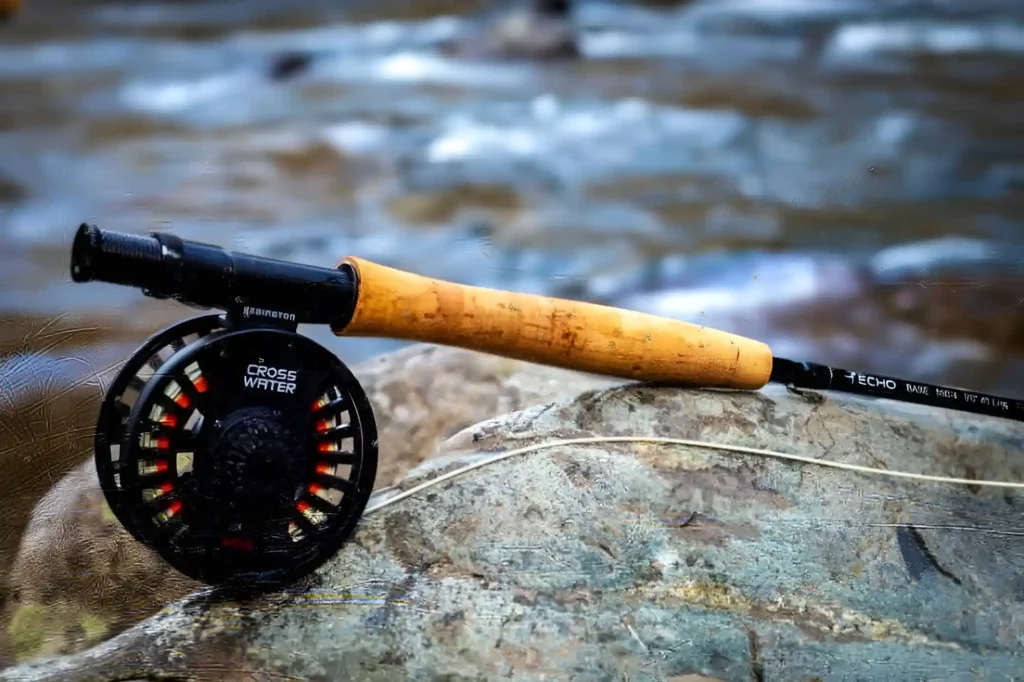
Centrepin reel, also called float or center pin reel, is the most straightforward reel for coarse fishing. The reel has no mechanical drag system; the angler catches the fish simply using their thumb. The centrepin reel has historical importance, and some anglers of today’s time use this reel for coarse fishing.
The modified version of the centrepin reel is called the fly reel.
Fly Reel, A modified version of Centrepin reel:
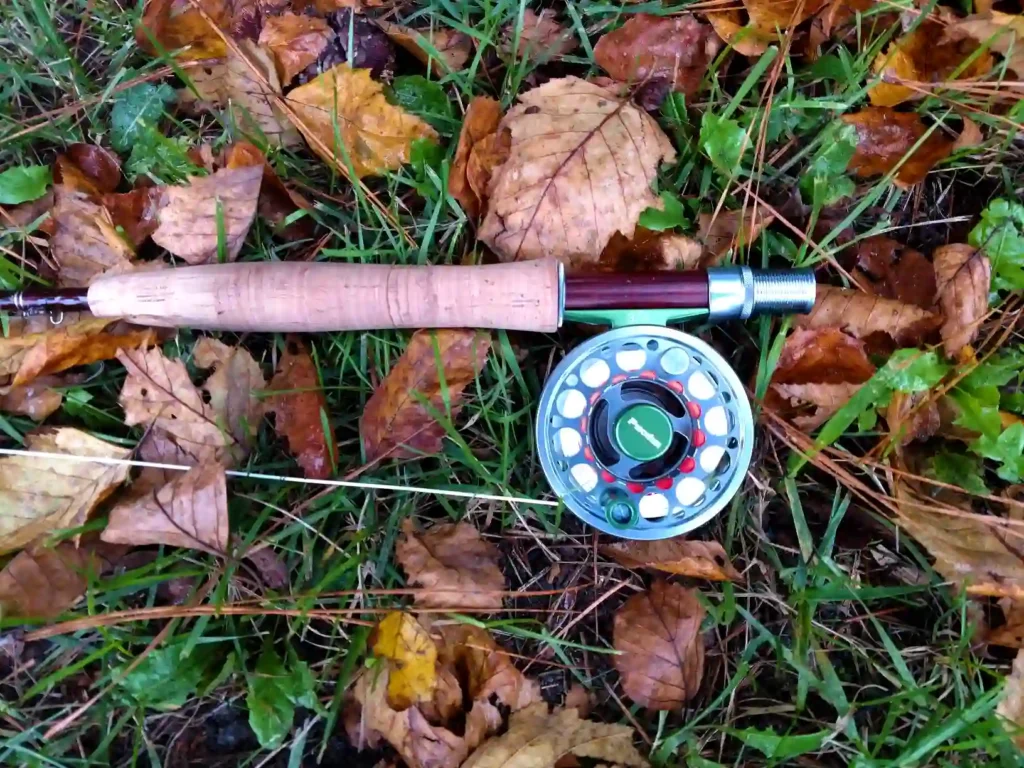
A fly feel is a modified version of a centrepin reel. For fly fishing, a solid fly-fishing reel setup is needed.
Keep your fishing rod low with the line already extended to start casting. Begin by swinging the rod backward and pausing briefly. As the line extends behind you, smoothly turn it forward in a straight motion. Come to a gentle stop with a loose grip on the line. Lower the rod tip to guide the fly to its landing spot.
While it might seem straightforward, fly casting requires precise control of your motor skills to become a skilled fly fisher.
Automatic Fly reel:
Automatic fly reels reached their highest popularity during the 1960s; since then, manual fly reels have consistently outsold automatic ones significantly.
Automatic fly reels utilize a spiral spring mechanism, quickly retracting the fishing line into the reel by flicking a lever. These reels are often heavier than their size suggests and have a restricted line-holding capacity.
Modern Fly reel:
Contemporary fly reels come with advanced disc-type drag systems made from composite materials. These systems offer a broader range of adjustments, greater consistency, and enhanced resistance to heat generated by drag friction.
Many of these reels also feature large-arbor spools, which help reduce line memory, maintain a steady drag, and facilitate the quick retrieval of slack lines if a hooked fish suddenly darts toward the angler.
Additionally, most modern fly reels are designed to be ambidextrous, allowing anglers to place the crank handle on either the right or left side according to their convenience.
Saltwater Fly reel:
Fly reels are designed for saltwater to face the challenges of the ocean environment specifically. The typical feature of saltwater fly reels is a large-arbor design, meaning their spools are much larger than freshwater fly reels.
This design helps with better retrieval ratios and increases line and backing capacity.
To fight corrosion in the saltwater environment, these reels often incorporate aerospace aluminum frames and spools or stainless-steel components, sealed, waterproof bearings, and drive mechanisms.
Why should we consider Fly Reel?
We should consider fly reel because of the following reasons:
- The fly reel allows for precise throws over longer distances than other reels.
- Fly reels are specifically designed for artificial flies, mimicking insects that many fish prey on.
- Casting with a fly reel is silent, ensuring that the fly lands gently on the water without startling the fish, unlike other reels.
- Fly reels offer a higher retrieval rate due to their larger spool size, providing anglers with faster line retrieval than other reel types.
Why shouldn’t we consider a fly reel?
We shouldn’t consider fly reel because of the following reasons,
- Fly fishing is unique and not ideal for certain types of catches, like deep-sea fish, making fly reels limited in versatility.
- If you’re interested in various types of catches, you’ll likely need a different reel, as fly reels differ from spinners or bait-casters.
- Quality fly reels tend to be more expensive compared to other reel types
Types of drag systems:
There are four types of drag systems, as you’ll see in the fly reel.
- Ratchet and pawl
- Caliper drags
- Disc drags
- Centerline drags
Side-cast Reel:
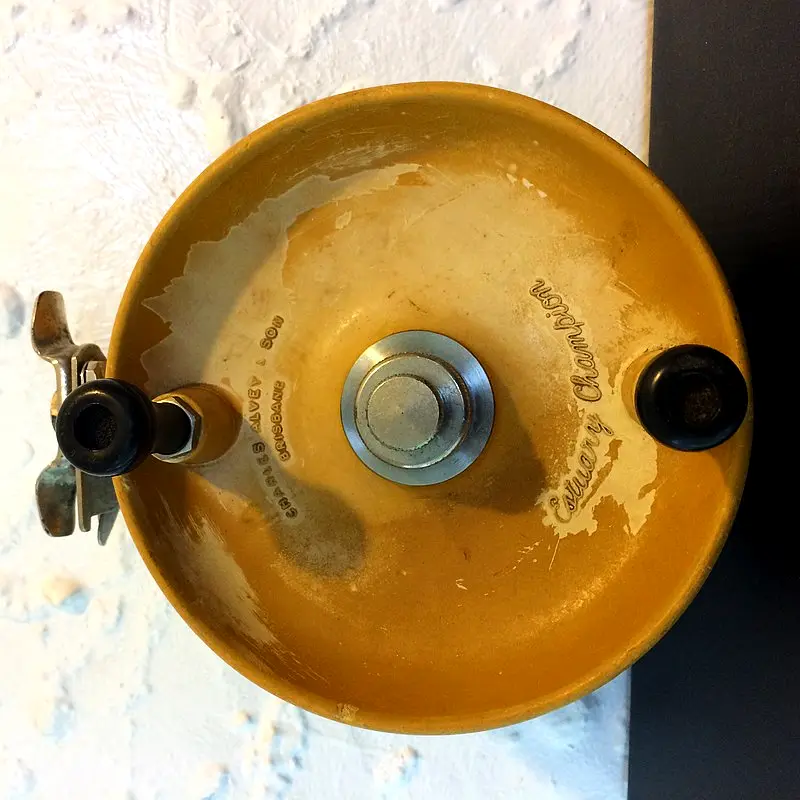
The side-cast reel is a combined version of the Centrepin reel, including a bracket that helps the anglers with 90-degree casting rotation and returns to the original position for line retrieval.
In the casting position, the spool face is perpendicular to the rod, and the line can smoothly slide off the side of the spool. The axle remains parallel during casting.
Side-cast reels are widely favored by anglers more in Australia than in the USA for both freshwater and saltwater fishing.
Why should we consider Side-cast reel:
We should consider a side-cast reel because of the following reasons:
- The side-cast reel offers a smooth casting experience comparable to spinning reels, making it a preferred choice for certain fishing conditions.
- The direct-driven design ensures a smooth line release during casting, enhancing the overall fishing experience.
Why shouldn’t we consider Side-cast reel?
We shouldn’t consider a side-cast reel because of the following reasons:
- Requiring an additional hand movement to start reeling is a drawback, making it less convenient than other reel types.
- While effective for specific applications like surf fishing, side-cast reels may not be as versatile as other reel types for various fishing conditions.
- Side-cast reels might not be the best choice for anglers seeking a reel suitable for a wide range of fishing styles
Conventional Reel:
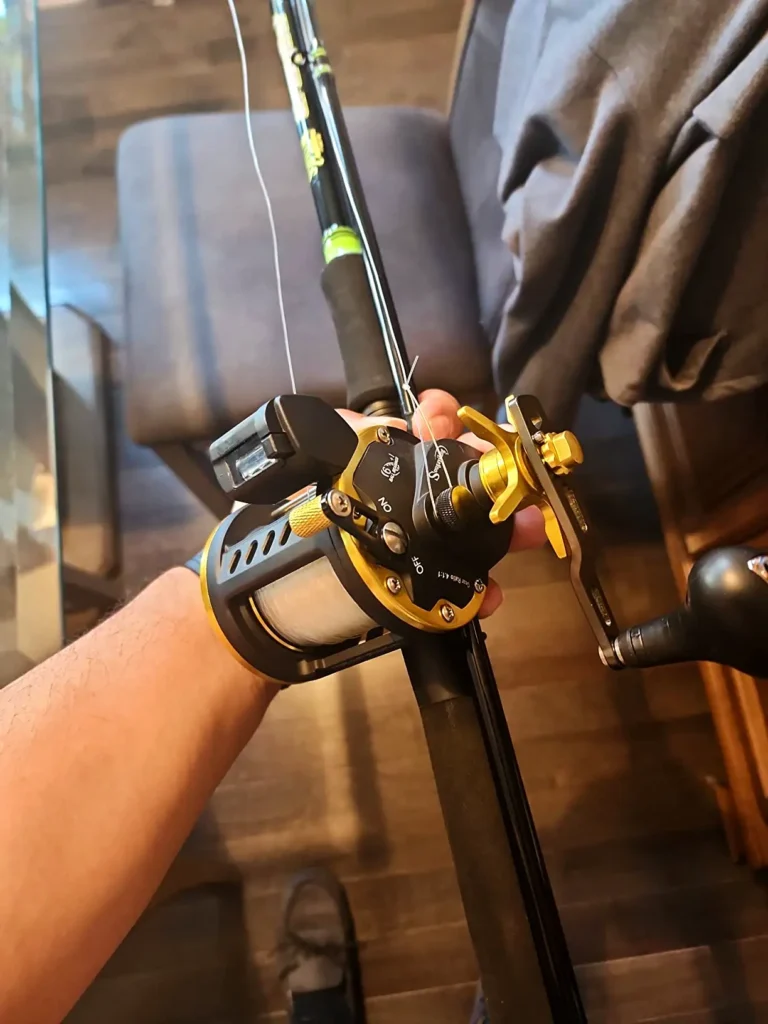
A conventional reel is also called a trolling reel or multiplier reel. Why? Because of its internal gear train design. This unique mechanism results in more spool turns for each rotation of the crank handle during line retrieval.
It offers flexibility in mounting, being adaptable to positions both above and below the rod handle, with the spool axis oriented perpendicular to the rod.
Unlike its spinning reel counterpart, the line does not travel over the end of the spool in this setup. To enhance the even distribution of the line onto the spool, most modern conventional reels have a sliding line guide that moves left and right as the handle is cranked.
This feature ensures a smoother and more organized line winding onto the reel.
Types of Trolling reel:
There are two main types of trolling reels based on their drag system design:
- Star drag system:
- Lever drag system:
Star drag system:
Star drag reels resemble most bait-casters, featuring a star-shaped knob for drag control and a small lever to engage the free spool.
Lever Drag system:
Lever drag reels use a drag lever to perform both functions, applying drag and activating a free spool. Regardless of the Type, it’s essential to prevent backlash when in a free spool, and you can do this by keeping a thumb on the spool.
While smaller conventional reels can be cast, larger ones are unsuitable for casting, becoming more challenging as their size increases.
Conventional reels are mainly designed for trolling in deep-sea fishing. However, they can also be utilized for drift fishing, butterfly jigging, and deep drop fishing.
Why should we consider trolling reel:
We should view the trolling reel for the following reasons;
- Trolling reels are versatile tools for deep-sea fishing techniques such as trolling, drift fishing, butterfly jigging, and deep drop fishing.
- Trolling reels offer two main types of drag systems, star drag and lever drag, providing anglers with options based on their preferences and fishing style.
- The drag mechanisms in trolling reels allow controlled and adjustable line release, essential for managing the fight with powerful fish.
- Trolling reels are well-suited for offshore fishing conditions, providing the strength and durability needed for challenging conditions in deep waters.
Why shouldn’t we consider trolling reel:
We shouldn’t consider trolling reel because of the following reasons:
- Large trolling reels are not designed for casting; their size makes casting difficult. Smaller versions can be released, but they are less versatile in this aspect than other reel types.
- Trolling reels are primarily designed for offshore or deep-sea fishing. There may be better choices for anglers who want to fish in inland waters where different reel types might be more appropriate.
- Novice anglers might find more straightforward reel types that are more user-friendly.
- Trolling reels, particularly high-quality ones, can be relatively expensive compared to other reel types.
Bait-cast reel:
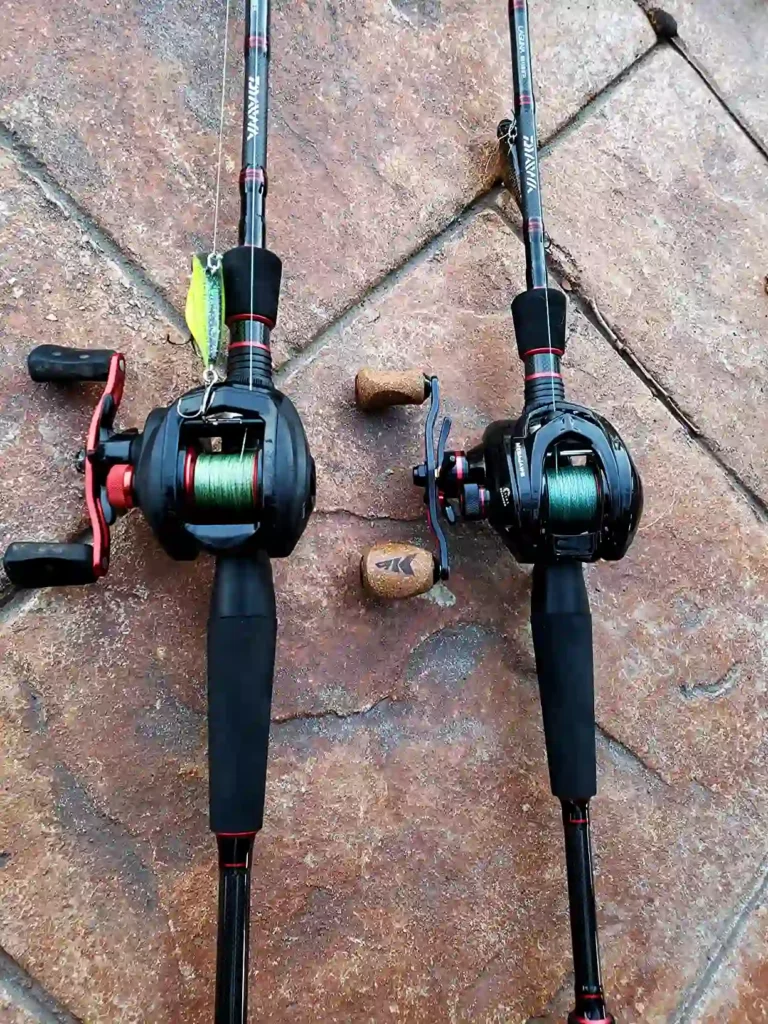
Baitcasting reels, known for their power and precision, help in diverse fishing styles. The reel is designed with complexity to meet the demands of experienced hobbyists and professionals. But don’t worry; here’s a complete guide to fishing with a bait-caster reel that is going to make your fishing experience easier.
The bait casters are easily recognizable by their placement atop the fishing rod and the drag toggle near the reel handle.
What sets the baitcasting reel apart is its robust semi-enclosed design and its unique customization options.
Through the spool tension knob and braking system, users can fine-tune the reel for optimal performance, offering greater control to cast long distances while preventing the spool from turning too quickly.
This customization demands expertise, requiring a skilled hand to press the thumb against the spool mid-throw. With the correct settings, instincts, and timing, one can achieve precise casting, guiding the bait with almost laser-point accuracy. After the lure lands, securing the line with a clip completes the process.
Understanding the gear ratio of a Baitcaster reel helps you pick the right bait-casting reel that suits your fishing style and needs.
Why should I consider a Bait-cast reel:
We should consider bait-cast reel because of the following reasons:
- Baitcasting reels come in various sizes, capable of handling both heavy and lightweight fishing lines.
- The intricate design of baitcasting reels and unique customization options contribute to heightened casting accuracy, setting them apart from other reel types.
- Bait-casters contribute to their power and enhance overall efficiency, providing anglers with a reel that meets the demands of experienced users seeking precision and control.
Why shouldn’t we consider a bait-casting reel:
We shouldn’t consider bait-casting reel because of the following reasons:
- Bait-casters can be challenging for newcomers and require learning and experience.
- The need for reconfiguring settings, especially with different line weights, adds complexity to casting, making it less straightforward than other reel types.
- Even for experienced anglers, overcoming a learning curve is necessary before achieving success with bait-casters.
- Potential buyers should pay attention to the price range, as the more advanced features of bait-casters, even in smaller sizes, often result in higher prices than most reels.
Two Configurations of Bait-casting reel spool designs:
The two types of revolving spool baitcasting reels are surf fishing and big game reels. These reels are specifically made to handle heavy saltwater species like marlin, tuna, sailfish, and sharks, making them large and robust.
Surf fishing reel:
The surf fishing reel is specifically designed for anglers who engage in surf fishing. These reels are typically mounted on long, two-handed rods to accommodate the unique demands of casting in the surf. Notably, they often lack level wind and braking mechanisms, allowing for extended casting distances, which is crucial when trying to reach distant points in saltwater environments.
The design of surf fishing reels is made to face the challenges of casting bait over substantial distances, making them a preferred choice for anglers seeking to explore the depths of saltwater environments from the shore.
Big game reel:
These big game reels are not intended for casting; they excel in trolling or fishing with set baits and lures. Well-suited for battling large and heavy fish from piers or boats, these reels are built with the strength and durability required for such encounters. They incorporate advanced drag systems to handle substantial saltwater gamefish effectively, often featuring sophisticated star or lever drags. This makes them reliable tools for anglers seeking to tackle robust marine species in offshore fishing conditions.
Spinning reel:
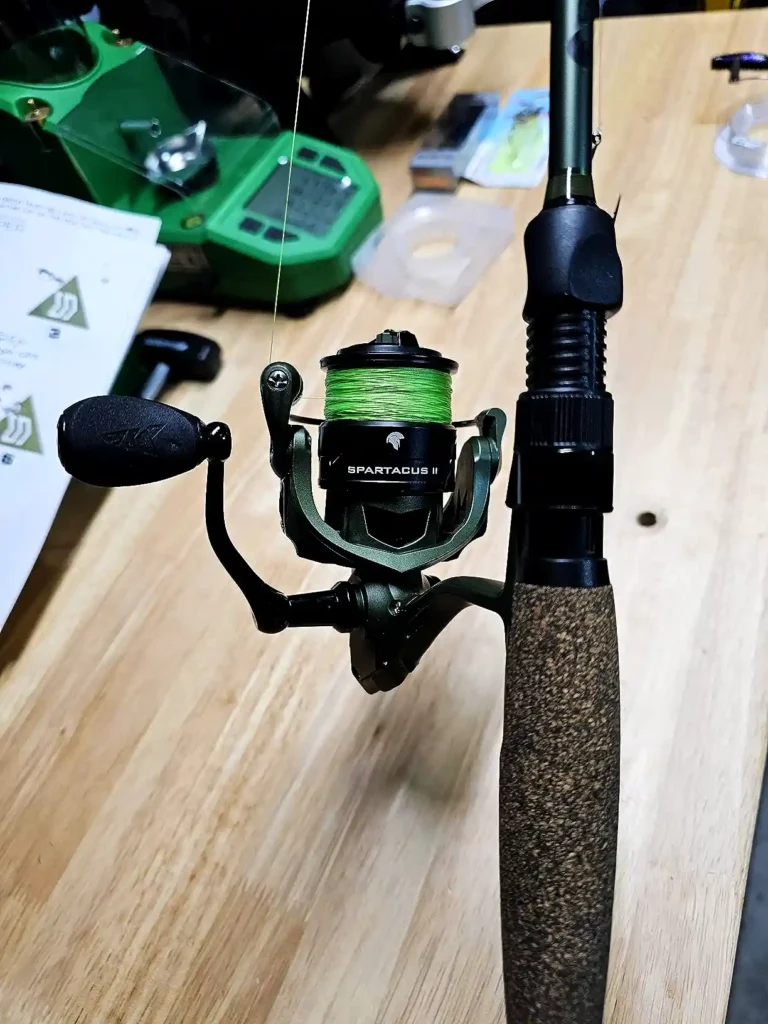
For those entering the world of fishing as a new hobby, learn about the spinning reel size chart, which helps you choose the right spinning reel.
The spinning reel is also called eggbeater, fixed spool reel, or open-face reel; it’s a favorite among beginners and seasoned anglers.
Unlike the spin-cast, the spinning reel has a slightly more intricate design, positioned beneath the rod with the drag adjustment toggle at the nose of the reel.
Instead of a button, spinners feature a metal bail at the rear of the reel. Spinners are versatile, suitable for casting or jigging, and are known for their durability in various fishing conditions. Although casting with a spinning reel may seem challenging initially, it’s becoming easy after some practice.
To cast, release the bail and use your index finger to hold the line against the rod, preventing it from unraveling. Swing your rod (overhead or to the side), release the bail midway through the motion, and aim the rod in your desired direction.
You must know how much line to put on a spinning reel to avoid tangling during or after casting.
After casting, remember to reengage the bail to avoid tangles, either automatically with most models or manually by pulling and reengaging the metal bail after the first cast lands.
Type of drag designs:
Following are the drag designs used in spinning reel:
- Front drag:
- Bait Runner:
Front Drag:
Front drags consist of a screw knob positioned at the front end of the spool, applying direct and graduated axial pressure on the drag washers located on the primary pinion. Adjusting these drags involves reaching around the front to turn and either tighten or loosen the spool. Front drags are mechanically simpler, providing more consistent performance and the ability to handle higher drag forces.
Rear drag or bait runner:
In contrast, rear drags feature an adjustment screw situated at the back of the reel, accompanied by a separate lever for activation.
This drag automatically disengages when the angler touches the spool crank, and at that moment, the front drag takes over, incorporating its setting into the battle. Rear drags typically offer less than ten pounds of drag force, as they are considered more mechanically complex and often less precise or smooth than front drags.
This is because drag is frequently part of the drive shaft, not the spool. Rear drags are designed for the initial moments of the encounter when the fish has taken the bait but the hook is not set. The rear drag disengages when the angler turns the spool-crank to confront the running fish and sets the hook
Why should we consider a Spinning reel:
We should consider the spinning reel for the following reasons:
- Spinning reels combine durability with efficient performance and are suitable for various fish species, such as bass fishing. Using a spinning reel for bass fishing is a fun experience that requires specific techniques.
- Both beginners and experienced anglers find casting with a spinning reel relatively easy.
- The flexibility of the spinning reel contributes to a painless casting experience.
why shouldn’t we consider spinning reel:
We should consider the spinning reel because of the following reasons:
- Due to the metal bail, spinning reels are prone to tangling, resulting in what is commonly known as a bird’s nest, causing frustration for inexperienced users.
- While relatively versatile, there may be better choices than spinning reels for handling heavier lures or lines.
- For those considering big game fishing, investing in a specially designed or modified spinning reel is advisable to meet the specific demands of such pursuits.
Spin-cast Reel:
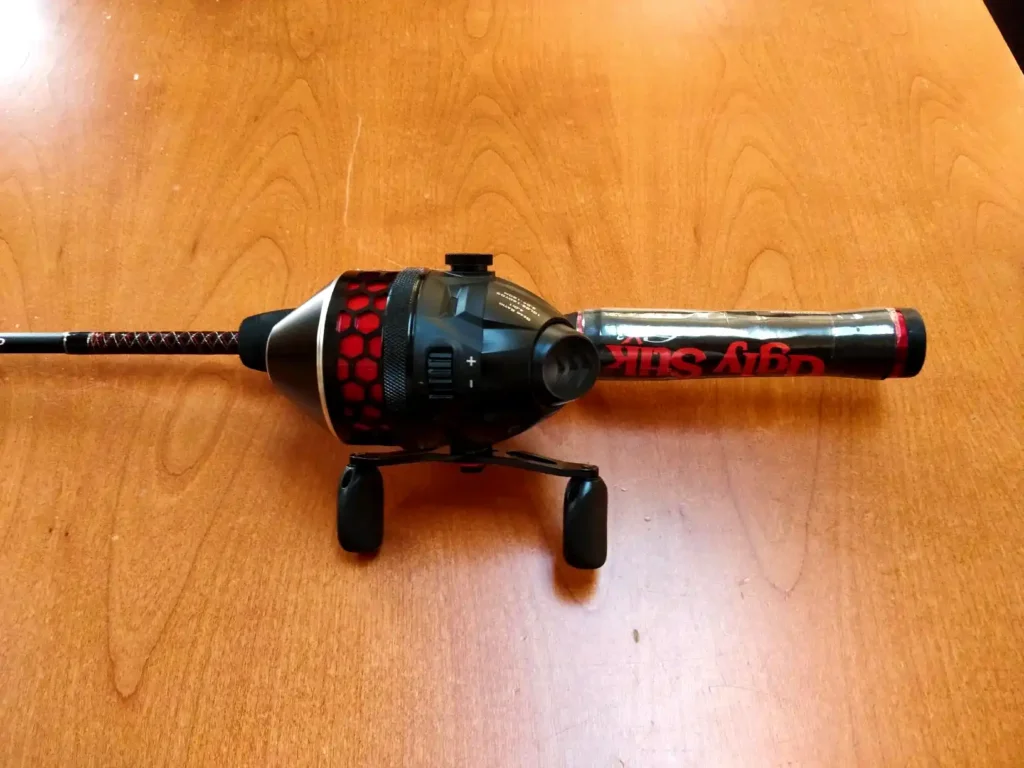
The spin-cast reel, also called the Push button reel, was designed to issue backlash present in the bait-casting reel.
The spin-cast reel distinguishes itself from spinning reels by eliminating the large wire bail and line roller, opting for one or two pickup pins and a metal cup to wind the line onto the spool.
Positioned above the rod, the spin-cast reel includes an external nose cone that encloses and protects the fixed spool, often called closed-face reels.
Spin-cast reels often feature anti-reverse mechanisms and friction drags; some may include level-wind mechanisms.
Pressing a button on the rear of the reel disengages the line pickup, and releasing the button during the forward cast allows the line to fly off the spool. Pressing the button again stops the lure at the desired position. Cranking the handle immediately reengages the pickup pin, spooling the line onto the reel.
Underspin reel, the Types of spin-cast reel:
Underspin reels, also known as trigger-spin reels, are variations of spin-cast reels specially designed to be mounted beneath a standard spinning rod. Learn the in-depth difference between spin-cast and spinning reel. Unlike traditional spin-cast reels, the reel foot is positioned on top of the reel, resembling the configuration of a spinning reel.
The line release button in spin-cast reels is replaced by a front lever in underspin reels. This alteration allows the reel’s weight to be suspended beneath the rod.
The unique design of underspin reels offers enhanced comfort during casting and extended use. The reel’s weight beneath the rod becomes more ergonomic for prolonged holding and casting.
Moreover, pairing underspin reels with standard spinning rods significantly boosts their versatility compared to traditional spin-cast reels.
Why should we consider a Spin-cast reel:
We consider spin-cast reel for the following reasons:
- Spin-cast reels are known for their user-friendly design, making them ideal for beginners entering the fishing world.
- Spin-cast reels are designed to minimize backlash issues, providing a smoother experience, especially for those learning to cast.
- Unlike traditional spinning reels, spin-cast reels often experience fewer line twists, reducing the chances of tangles and knots.
- The operation of a spin-cast reel is straightforward, typically involving a simple button press for casting, making it accessible for anglers of all skill levels.
- The closed-face design of spin-cast reels helps protect the spool, reducing exposure to external
Why shouldn’t we consider a Spin-cast reel:
We shouldn’t consider spin-cast reel for the following reasons:
- Spin-cast reels may offer limited casting distance compared to other reel types, limiting their effectiveness when a more extended cast is necessary.
- Different from baitcasting or spinning reels, spin-cast reels may provide less precision and pulling power, making them less suitable for specific fishing scenarios.
- Spin-cast reels are generally not the best choice for handling heavier lures or lines, limiting their versatility in specific fishing situations.
- Experienced anglers may find the simplicity of spin-cast reels limited, as they may prefer more advanced features and controls offered by other reel types.
- Spin-cast reels may have more limited maintenance options than other reels, potentially leading to challenges in keeping them in optimal condition over time.
